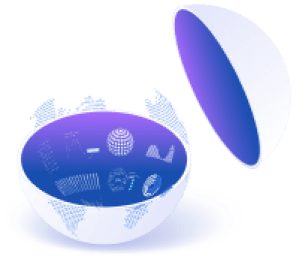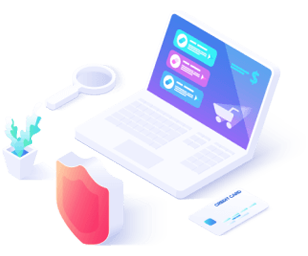What is On Page SEO and its Benefits ?
On-Page SEO refers to the practice of optimizing individual web pages to rank higher in search engine results and attract more relevant traffic. It involves making changes to the content and structure of a webpage to make it more search-engine friendly. The goal is to ensure that search engines understand the content of the page and can index it effectively.
Key Components of On-Page SEO:
Title Tags: This is the clickable headline that appears in search engine results. It should be descriptive, relevant to the content, and include the primary keyword.
Meta Descriptions: These are short descriptions (usually 150-160 characters) that summarize the page’s content. Although not a ranking factor directly, they influence click-through rates (CTR).
URL Structure: Clean, concise URLs that include the main keyword can improve rankings and user experience.
Header Tags (H1, H2, H3, etc.): These tags help structure the content into sections, making it easier for search engines to understand and rank.
Keyword Optimization: Ensuring the primary keyword and relevant related terms are used naturally in the content without keyword stuffing.
Internal Linking: Linking to other pages within your site helps distribute page authority and guide users to more content.
Image Optimization: Properly naming image files, adding alt text, and compressing images for faster load times.
Content Quality: High-quality, original content that answers the user’s query, engages them, and encourages sharing.
Mobile Friendliness: Google uses mobile-first indexing, meaning mobile-optimized sites tend to rank higher.
Page Speed: Faster loading times improve user experience and are a ranking factor for Google.
Benefits of On-Page SEO:
Better Rankings: Proper optimization helps search engines understand and rank your content, improving your position in search results.
Increased Traffic: With better rankings, more users will discover your website, resulting in more organic traffic.
Improved User Experience: Optimizing content, design, and site structure provides a better experience for visitors, leading to lower bounce rates and higher engagement.
Enhanced CTR (Click-Through Rate): Effective title tags and meta descriptions can increase the likelihood that users will click on your page from the search engine results page (SERP).
Competitive Advantage: On-page SEO helps you stand out from competitors by ensuring your content is well-optimized and more visible to users.
More Conversions: With better content and optimized user experience, visitors are more likely to convert (whether that’s making a purchase, signing up for a newsletter, etc.).
Long-Term Results: On-page SEO is an ongoing process that, when done correctly, can yield long-term positive effects on your website’s search engine rankings.
In summary, On-Page SEO is about optimizing various elements of your website’s content and structure to improve its visibility and relevance to both search engines and users, leading to better traffic and conversions.
What is Off Page SEO and its Benefits ?
Off-Page SEO refers to the actions taken outside of your website to improve its search engine rankings. While on-page SEO focuses on optimizing individual web pages, off-page SEO deals with external factors that influence your site’s authority, relevance, and reputation. The most prominent aspect of off-page SEO is backlinks—links from other websites that point to your content.
Key Components of Off-Page SEO:
Backlink Building: Acquiring high-quality backlinks from authoritative websites is one of the most important aspects of off-page SEO. The more relevant and trustworthy websites link to your content, the more search engines see your site as authoritative.
Social Media Marketing: Sharing your content on social media platforms like Facebook, Twitter, LinkedIn, and Instagram can generate traffic and brand awareness. Although social signals (likes, shares) don’t directly influence rankings, they can indirectly affect SEO by increasing engagement and links.
Guest Blogging: Writing articles for other blogs and websites in your industry allows you to build backlinks and get exposure to new audiences.
Influencer Marketing: Partnering with influencers to promote your content or products can drive traffic and generate backlinks from their authoritative websites or social profiles.
Social Bookmarking: Websites like Reddit, Pinterest, and Digg allow users to bookmark links to articles, images, or resources, which can drive traffic to your site.
Online Reviews: Positive reviews on sites like Google My Business, Yelp, or Trustpilot can enhance your website’s credibility and attract more users.
Directory Submissions: Submitting your website to trusted online directories can improve its visibility, though this is less effective today than it was in the past.
Content Marketing (Podcasts, Webinars, Videos): Sharing content through various forms such as podcasts, videos, and webinars can increase visibility and generate backlinks.
Brand Mentions: Even if a site doesn’t link back to your page, simply mentioning your brand or business name online can still have a positive effect on SEO, as search engines take brand mentions into account.
Forum and Community Engagement: Actively participating in forums, Q&A sites (like Quora), and online communities relevant to your niche can drive traffic and establish your authority in the industry.
Benefits of Off-Page SEO:
Improved Domain Authority: Gaining high-quality backlinks from authoritative websites helps increase your website’s domain authority, which can boost rankings in search engines.
Better Search Engine Rankings: Search engines like Google use backlinks as a major ranking factor. The more relevant and authoritative the backlinks, the more likely you are to rank higher in search results.
Increased Website Traffic: Off-page activities like social media shares, guest blogging, and influencer collaborations can drive more referral traffic to your website.
Enhanced Brand Visibility: Off-page SEO strategies, particularly social media marketing and content marketing, increase your brand’s exposure, helping you reach a larger audience.
Higher Trust and Credibility: Backlinks from trusted, high-quality websites signal to search engines that your website is also trustworthy, which can enhance your credibility in the eyes of both users and search engines.
Long-Term Benefits: Building a strong off-page SEO profile can lead to sustained traffic and higher rankings over time, especially when you focus on earning high-quality backlinks.
Competitive Advantage: Engaging in off-page SEO helps differentiate your website from competitors. Having a solid backlink profile and strong brand mentions can help you rank above competitors with weaker off-page strategies.
Content Distribution: Off-page SEO allows your content to reach new audiences and markets, increasing your chances of gaining more backlinks, social shares, and traffic.
In Summary:
Off-page SEO is all about building your website’s reputation and authority through external factors, primarily backlinks. While on-page SEO ensures your website is optimized, off-page SEO helps search engines trust your website as a reliable and authoritative source. Combining both on-page and off-page SEO strategies can lead to improved rankings, increased traffic, and better overall performance in search engines.
What is Technical SEO and its Benefits ?
Technical SEO refers to the process of optimizing the technical aspects of your website to help search engines crawl, index, and rank your site more effectively. Unlike on-page SEO (which focuses on content and structure) and off-page SEO (which focuses on backlinks and external signals), technical SEO deals with the backend and infrastructure of your website to ensure that search engines can easily access and understand your content.
Key Components of Technical SEO:
Website Speed and Performance: Faster websites provide a better user experience and are favored by search engines. Optimizing page load times (using techniques like image compression, lazy loading, and browser caching) is essential for improving rankings.
Mobile-Friendliness: With Google’s mobile-first indexing, it’s crucial that your website is optimized for mobile devices. A responsive design ensures that your site looks and functions well on all screen sizes.
SSL/HTTPS Security: Websites with SSL certificates (HTTPS) are considered more secure and trustworthy. Google uses HTTPS as a ranking signal, so it’s important to have this encryption for better rankings and user trust.
XML Sitemaps: An XML sitemap is a file that lists all the important pages on your website to help search engines crawl and index them. This ensures that search engines can find all of your pages, especially if they are deep within your site.
Crawlability and Indexability: Making sure search engines can easily crawl and index your content is essential. This can involve fixing issues like broken links, blocking search engines from important pages (using robots.txt), and using proper redirects (301 redirects) to avoid dead links.
Structured Data (Schema Markup): Adding schema markup (structured data) to your website helps search engines understand the context of your content. It can improve how your pages are displayed in search results (rich snippets), like showing star ratings, images, or other specific information directly in the search results.
Canonical Tags: These are used to prevent duplicate content issues by specifying the “preferred” version of a page. For example, if the same content is accessible via multiple URLs, canonical tags tell search engines which version should be considered the primary one.
URL Structure: Clean, simple, and descriptive URLs make it easier for search engines to understand the content of your page. Avoiding long and complex URLs with unnecessary parameters can improve crawlability.
Fixing Broken Links: Broken links (404 errors) can affect your site’s SEO. It’s important to regularly check for and fix broken links to improve both user experience and search engine crawling.
Robots.txt: This file is used to instruct search engine crawlers about which parts of your website should or shouldn’t be crawled. Properly configuring this file ensures search engines don’t waste time on irrelevant pages.
Redirects: Implementing 301 redirects properly is essential when you move or delete pages. This ensures that link equity is passed on and users don’t encounter broken links.
AMP (Accelerated Mobile Pages): AMP is a framework for creating fast-loading mobile web pages. Although not as common anymore, AMP can still be beneficial in some cases for content-heavy sites, like news or blogs.
Benefits of Technical SEO:
Improved Crawling and Indexing: A well-optimized site allows search engines to crawl and index your pages more effectively. This helps your content get discovered and ranked.
Better User Experience: Many aspects of technical SEO, like improving page speed, mobile optimization, and fixing broken links, directly contribute to a better user experience. A good user experience can reduce bounce rates and increase engagement.
Higher Search Rankings: Search engines reward websites that are technically optimized, as it makes their job easier and enhances the overall user experience. Websites that perform well in terms of technical SEO are more likely to rank higher in search results.
Increased Mobile Traffic: Since mobile optimization is a critical component of technical SEO, your website will be better equipped to serve users on mobile devices, which can lead to more traffic and better rankings in mobile search.
Enhanced Security: Implementing HTTPS (SSL certificates) enhances the security of your website, protecting user data and making it more trustworthy. Google uses HTTPS as a ranking signal, which can positively impact your search rankings.
Faster Page Loading Times: Speed is a ranking factor for search engines, and faster sites are also preferred by users. Optimizing page load times can result in lower bounce rates, higher engagement, and ultimately better rankings.
Avoiding Duplicate Content Issues: Implementing canonical tags and structured data helps search engines understand the most important version of a page, preventing issues like duplicate content and ensuring the proper page gets credited for rankings.
Rich Snippets and Improved CTR: Structured data (schema markup) can enhance your search result listings with rich snippets (e.g., ratings, pricing, or other info), which can make your page more visually appealing and encourage higher click-through rates (CTR).
Long-Term SEO Health: Technical SEO ensures that your website runs smoothly, reducing the risk of technical issues that could harm your rankings. It’s a long-term investment that keeps your site optimized and competitive in search results.
Better Content Visibility: Optimizing for crawlability and indexability ensures that all your important content is discovered and indexed by search engines, increasing the visibility of your pages.
In Summary:
Technical SEO focuses on the infrastructure of your website and involves optimizing elements that affect how search engines crawl, index, and interpret your site. By ensuring that your website is fast, secure, mobile-friendly, and properly structured, you make it easier for search engines to rank your content. The benefits of technical SEO include better rankings, increased traffic, a better user experience, and improved long-term SEO health.
What is Local SEO and its Benefits ?
Local SEO is the practice of optimizing your online presence to attract more business from relevant local searches. It focuses on improving your website’s visibility for location-based searches and helps businesses promote their products and services to local customers. Local SEO involves a combination of on-page, off-page, and technical SEO practices specifically tailored to help a business rank in local search results (such as Google Maps, local search results, and local directories).
Key Components of Local SEO:
Google My Business (GMB) Optimization: Creating and optimizing a Google My Business profile is one of the most important aspects of local SEO. It allows your business to appear on Google Maps and local search results when users search for relevant keywords.
Local Keywords: Using keywords that are relevant to your geographic location (e.g., “best pizza in Chicago” or “plumber near me”) is crucial for ranking in local searches. These keywords should be incorporated into page titles, descriptions, and content.
NAP Consistency (Name, Address, Phone Number): Ensuring your business’s name, address, and phone number (NAP) are consistent across your website and all online directories (like Yelp, Yellow Pages, and local directories) is essential for local SEO.
Local Citations: Getting your business listed in reputable local directories and citation sites (like Yelp, Angie’s List, and other niche directories) helps build credibility and improve local rankings.
Online Reviews: Encouraging customers to leave reviews on platforms like Google, Yelp, or Facebook helps improve your business’s reputation and boosts local rankings. Positive reviews can influence both potential customers and search engine algorithms.
Location-Based Content: Creating content that is relevant to your local community, such as local events, news, or area-specific information, can help attract local traffic and improve your visibility in local searches.
Mobile Optimization: Since many local searches are performed on mobile devices, having a mobile-friendly website is crucial. Google prioritizes mobile-friendly sites in its rankings, especially for local searches.
Localized Landing Pages: If you have multiple locations, creating separate landing pages for each one, with localized content and optimized for local keywords, can help each location rank individually in search results.
Local Backlinks: Earning backlinks from local businesses, news outlets, and organizations strengthens your authority and relevance in the local area, which can improve your local rankings.
Schema Markup for Local Businesses: Adding local business schema markup to your website’s code helps search engines understand your business’s location and other important details, improving visibility in local search results.
Benefits of Local SEO:
Increased Local Visibility: Optimizing your website for local SEO helps you appear in local search results, including Google Maps and localized organic search results. This makes it easier for potential customers in your area to find your business.
Higher Website Traffic: By targeting local customers through relevant local search terms, your website is more likely to attract visitors who are looking for your products or services nearby.
More Foot Traffic to Your Store: Local SEO helps businesses appear in searches by users who are nearby. This can lead to increased foot traffic for brick-and-mortar stores or physical service providers.
Improved Conversion Rates: Local searches often lead to high conversion rates because people searching for local businesses are typically ready to make a purchase or engage with a service. They’re more likely to visit your store or contact your business after finding your listing.
Enhanced Credibility and Trust: Consistent and accurate business information (NAP) across directories, along with positive reviews, builds trust with both search engines and potential customers. It shows that your business is reputable and reliable.
Competitive Advantage: Local SEO helps you stand out in your local market, especially if your competitors aren’t as optimized. By ranking higher in local searches, you can attract more customers and gain an edge over your competition.
Better User Experience: Local SEO encourages businesses to create mobile-friendly websites, optimize content, and ensure their contact information is easily accessible, all of which improve user experience.
Cost-Effective Marketing: Local SEO is a cost-effective way to market your business to people who are most likely to convert into paying customers. It targets people in your geographical area who are actively searching for your offerings, providing a higher return on investment than broad, non-targeted advertising.
Improved Local Brand Awareness: Local SEO efforts can help increase your business’s visibility and brand awareness in your community. The more people see your business online, the more likely they are to recognize and trust it.
Insights and Analytics: Google My Business and other local platforms provide valuable insights and analytics, such as how customers find your business, where they come from, and actions they take. This information can help improve future marketing efforts.
In Summary:
Local SEO is about optimizing your online presence to rank higher in local search results, increasing your visibility to nearby customers who are looking for the services you offer. It involves optimizing your Google My Business profile, ensuring your NAP information is consistent, gaining local backlinks, encouraging online reviews, and tailoring content for your local community.
The benefits of local SEO include increased local visibility, higher website traffic, more foot traffic, better conversion rates, and an enhanced reputation, all of which lead to more business and a competitive advantage in your local market.


Features
Our Goal Is To Provide You Best Solution With AI
- Create business impact with the help of artificial intelligence
- Always provide the cost-effective and flexible artificial intelligence service.
Ready to Start Your Web Optimization
Contact us today for a free consultation and see how our Team of SEO AI expertise can elevate your brand.






